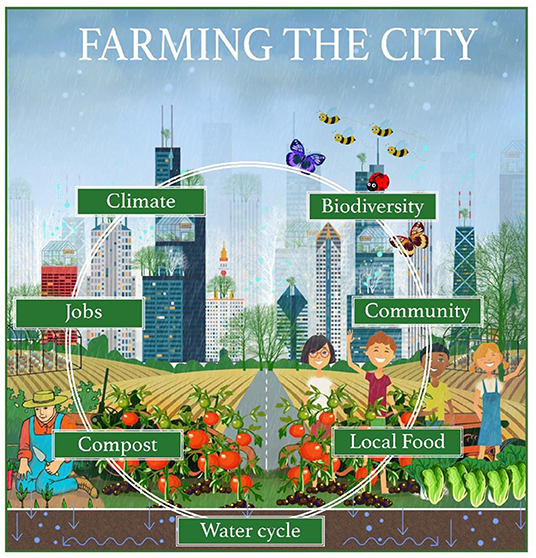Some Ideas on City Blooming You Should Know
Intrigued in growing food for sale in the City of Chicago? Below is a listing of regularly asked inquiries pertaining to the rules and policies that cultivators ought to think about when preparing a metropolitan agriculture job.
The zoning change does not change any kind of other codes managing composting, structure authorizations, acquiring or renting City possessed building, organization licenses or ecological contamination. There are existing codes that control these problems and they stay in full result and might be relevant to your task. Community yards are usually owned or managed by public entities, public companies or community-based companies and kept by volunteers.
Urban farms expand food that is planned to be offered, either on a not-for-profit or for-profit basis. Because of their commercial purpose, city farms need a company certificate. Yes. A community yard is enabled to market surplus generate that was expanded on site if the sales are accessory or subordinate to the yard's primary objective explained above.
Excitement About City Blooming
Composting is enabled yet only for plant product that is created and made use of on website. The amount of garden compost product can not go beyond 25 cubic yards at any type of offered time according to the standards in 7-28-715 of the City's Municipal Code. Yes. Since the dirt at most new garden sites needs changing, garden compost, dirt, timber chips, or various other materials can be obtained to create or boost the expanding room - garden care.

If a building permit is needed then the hoophouse will be taken into consideration an accessory structure. You can figure out more concerning the structure license requirements by contacting the Division of Buildings. The 25,000-square-foot size restriction is intended to prevent a solitary neighborhood garden from controling a given block or taking away from the block's existing residential or commercial personality.
The limitation does not put on yards situated in Public Open Room (POS) districts. Can there be greater than one neighborhood garden that is 25,000 square feet on a solitary block? Yes. The size restriction puts on private gardens, not to specific blocks. No. Fence is not required, nevertheless, gardens that have huge parking lot may be called for to mount fencing or various other landscaping attributes.
City Blooming Things To Know Before You Buy
B1 & B2 areas need that all commercial use tasks be carried out inside your home. Is fencing required for city ranches? Fences may be needed, along with landscaping and testing, for particular car parking locations and outdoor work or storage space locations depending on area and the particular task taking place.
Yes. Urban farms call for structure authorizations and zoning authorizations before building. Other types of city evaluation may be required depending on certain frameworks, activities, dimension, landscape design, licensing, public heath and stormwater monitoring issues. Several of these demands are determined in the project layout or allowing process, nonetheless, the applicant might be accountable to independently recognize specific licenses or permits that might be required.
Yes. The sort of permit is identified by what is taking place at the site. The Division of Service Affairs and Customer Protection can aid identify the details kind of service certificate that's required. Yes. Off street parking is required for a lot of business jobs in Chicago. The called for number of car parking rooms is based upon the number of employees working with website and not the square video footage of the growing space.
The Buzz on City Blooming

Yes. A city ranch can sell compost material produced on website, nevertheless, the procedure must adhere to the regulations in 7-28-715 of the Chicago have a peek at this website Municipal Code. Yes. Aquaponic systems are permitted inside your home on urban farms in several zoning areas. A zoning testimonial and structure permit is required in order to install structures or systems and a company license is needed as defined over.
Up to 5 hives or nests of honey might be maintained as an accessory use. Nevertheless, beekeepers should register with the Illinois Division of Farming. To find out more concerning the proposed zoning modification you may speak to the Department of Housing and Economic Growth, Bureau of Preparation and Zoning at 312.744.8563.
, which takes location in country areas at the edge of residential areas.
The Ultimate Guide To City Blooming
It can include a motion of natural farmers, "foodies" and "locavores", that look for to create social networks based on a common principles of nature and neighborhood holism. These networks can establish using formal institutional support, ending up being incorporated into regional town preparation as a "change community" motion for sustainable metropolitan advancement.
In either situation, the much more direct accessibility to fresh veggie, fruit, and meat items that may be know via urban farming can enhance food protection and food security while lowering food miles, resulting in reduced greenhouse gas discharges, therefore contributing to environment modification mitigation. A few of the first proof of urban agriculture originates from Mesopotamia.
Comments on “The Best Guide To City Blooming”